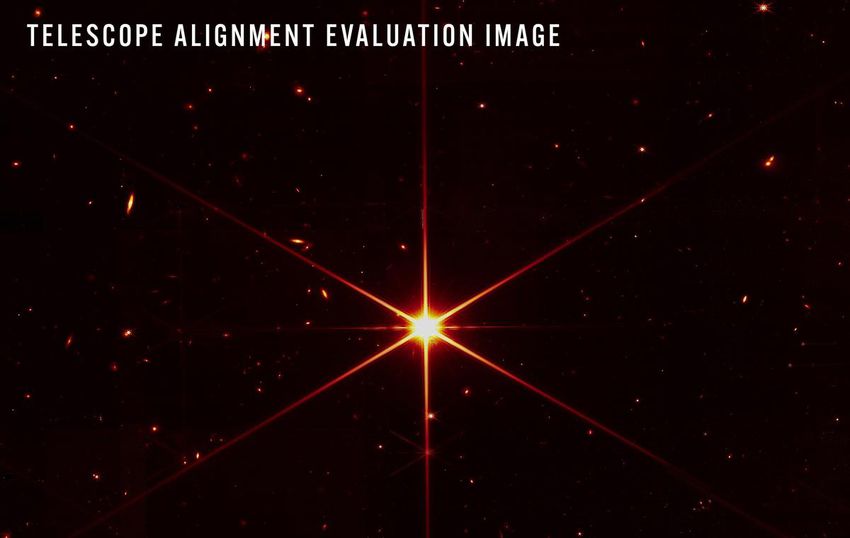The most powerful telescope ever built has just passed another milestone on its quest to open up the deepest reaches of the universe for scientists.
On March 11, the team behind the James Webb Space Telescope — now orbiting the sun some 1.5 million kilometers from Earth — finished the process of aligning the telescope’s 18 hexagonal-shaped mirrors with its primary camera, the Near Infrared Camera (NIRCam).
That means that the 18 blurry images of one star photographed by the telescope in early February have been consolidated into one finely focused, high-resolution image, in this case, an image of a star going by the unwieldy name of 2MASS J17554042+6551277.
And that image has NASA’s team buzzing.
“We have the highest resolution infrared images taken from space ever,” said NASA scientist Scott Acton.
“We have exceeded every expectation. The telescope has performed better than the models said it should… we’re just thrilled to death.”
The $10-billion Webb telescope, which launched in late December, is 100 times more powerful than its predecessor, the Hubble telescope. Its 18 individually adjustable mirrors, each made of beryllium thinly coated with gold, cover an area of 25 square meters — six times the size of the Hubble’s mirror.
It has the potential to let researchers probe the furthest corners of space, to literally look back in time to the near dawn of the universe, to observe how galaxies form and even to scan other Earth-like planets for the building blocks of life.
The process of aligning the 18 mirrors involved what the Webb team calls “image stacking” — taking the individual images produced by each of the mirrors and adjusting the mirrors until those images fall on top of each other at a common point.
But the telescope still has a long way to go before it becomes fully operational.
The Webb team still has to calibrate the telescope for its other instruments, the Near Infrared Spectrographthe Mid-Infrared Instrument and one of two Canadian contributions to the telescope, the Near Infrared Imager and Slitless Spectrograph.
Canada’s other contribution, the Fine Guidance Sensor, uses a series of stars as reference points to keep the telescope pointed at its target. It’s accurate enough to detect the telescope being off target by the width of a human hair at a distance of a kilometre. Its use was vital in the calibration of the mirror segments.
The Webb telescope also has another month to go in its cooling-down process, dropping its temperature to that of the space around it, in order for its infrared instruments to operate under ideal conditions.
But even that and its distance from the sun aren’t enough. The telescope also features a huge sunshield, about the size of a tennis court, to act as an umbrella, always between the Earth and sun and the telescope.
The Webb telescope is expected to produce its first research data and images by the summer.
JOIN THE CONVERSATION
